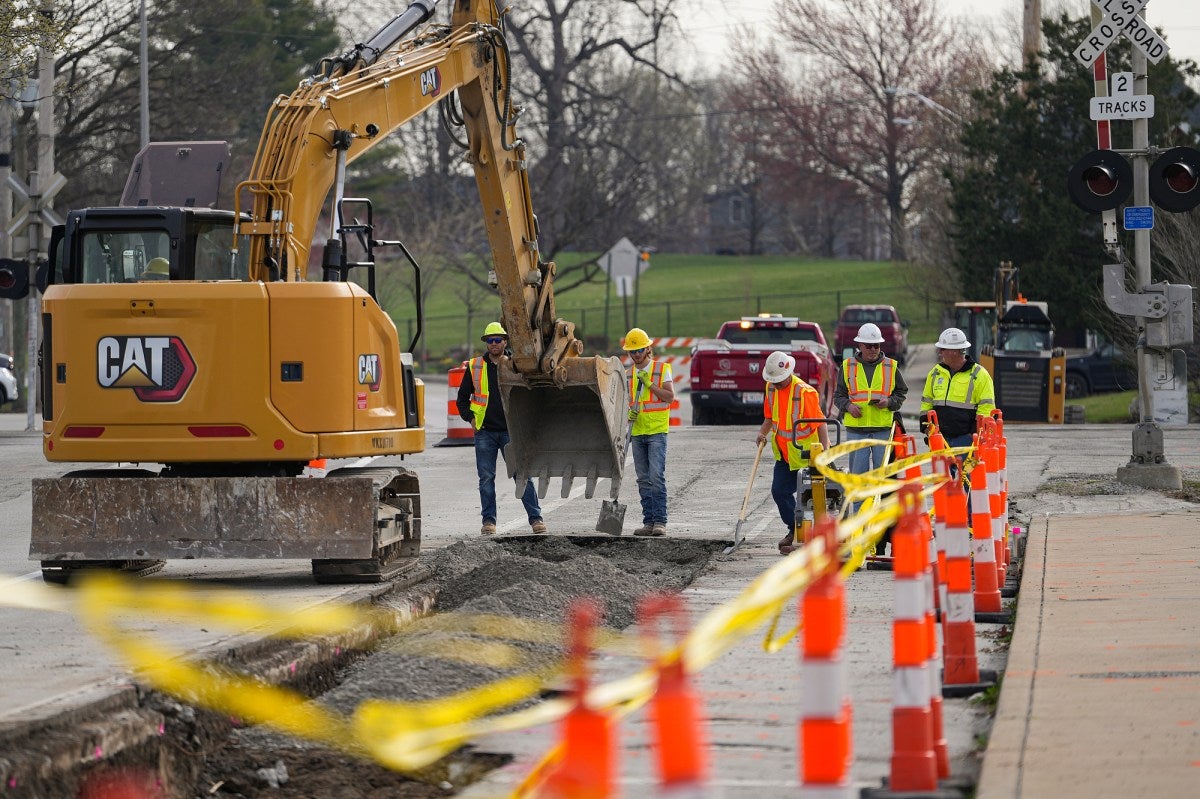Why parts of Michigan and New York streets are being converted to two-way traffic
(MIRROR INDY) — Construction on New York and Michigan streets began last week, but the efforts to convert both roads to two-way traffic has been years in the making.
The conversion of both roads — between College Avenue and Ellenberger Park — is intended to make the streets safer for cyclists, drivers and pedestrians while also encouraging foot traffic and increasing visibility for local businesses along the corridors.

The switch is the result of more than a decade of conversations between community activists, local business owners and city officials.
The nearly $20 million project also will involve improvements to existing sidewalks, curbs and ADA ramps, crosswalk enhancements, street resurfacing, protected bike lanes and enhanced bus platforms.
Here’s a breakdown of why the project is happening and what it hopes to accomplish:
What’s going on?
The Indianapolis Department of Public Works is redesigning traffic patterns on New York and Michigan streets to create “a safer, more neighborly city,” Mayor Joe Hogsett announced last week.
Contractors are replacing sidewalks on the south side of New York Street, on the western end of the project at College Avenue. New York remains open during that work. The northern side of Michigan Street near Ellenberger Park currently is closed to traffic.
Citizens Energy Group is replacing lead service lines for homeowners and buildings in the construction zone ahead of the upcoming road work.
Why is this happening?
Fifty years ago, these stretches of New York and Michigan streets were designed for two-way traffic, but the city converted them into one-way corridors to better accommodate the 6,500 workers commuting to and from the RCA manufacturing plant in Sherman Park.
The facility closed in 1995, but the streets remained one-way despite the dramatic decline in traffic following the plant’s closure.
In 2007, a coalition of near eastside neighborhood groups developed a community plan that offered a vision — one that turned Michigan and New York streets back to their original state.
“If you don’t have 6,500 workers, it’s a little more difficult for businesses to make their economic livelihood work if it’s not convenient or easy to get to them,” James Taylor, CEO of the John Boner Neighborhood Center and a longtime advocate for the street conversion, told Mirror Indy. “We’ve always concluded that those commercial corridors just can’t thrive well if you’re on a one-way street where cars are literally zipping 45 mph to and from.”
Conversion of one-way roads to two-way roads can lead to lower speeds by drivers, as fewer adjacent lanes will provide fewer opportunities to weave or overtake, according to the Federal Highway Administration. In Louisville, Kentucky, a two-way conversion resulted in a 60% decrease in collisions per month.
Marion County updated its “Complete Streets” policy in 2022, defining a complete street as one that “allows safe access for all users, including pedestrians, bicyclists, motorists, and public transportation users of all ages and abilities.”
The policy ensures that any future street designs accommodate all modes of transportation.
What measures are in place to protect bikers?
The new design allows for one-way bike lanes beside vehicles, with buffer space and curb protection to protect bikers from vehicle traffic.
What neighborhoods are affected?
Arsenal Heights, Bosart Brown, Emerson Heights, Englewood, Grace Tuxedo Park, Tuxedo Park and Woodruff Place.
How long will this work be going on?
The project is expected to be completed by the end of the year.

What’s next?
In the coming years, the city plans to apply for federal funding to convert other one-way streets to two-way traffic, including a stretch of College Avenue from Market Street to Virginia Avenue.
Earlier this year, the city converted five blocks of College Avenue between St. Clair and Market streets to two-way traffic. Previously, drivers were only able to go north. The changes also brought protected bike lanes and flashing crosswalk signals.
Other two-way streets planned for conversions include:
- Alabama Street from Washington to Michigan streets
- Capitol Avenue from 21st to 38th streets
- East Street from Washington to 10th streets
- Delaware Street from I-65N to Fall Creek Parkway South Drive
- Illinois Street from 21st to 38th streets
- New Jersey Street from Washington to Michigan streets
- Pennsylvania Street from I-65N to Fall Creek Parkway South Drive
Peter Blanchard covers local government. Reach him at 317-605-4836 or peter.blanchard@mirrorindy.org. Follow him on X @peterlblanchard.
